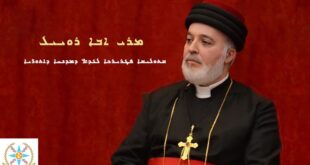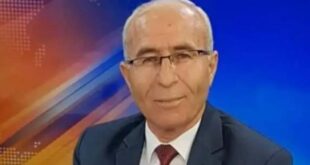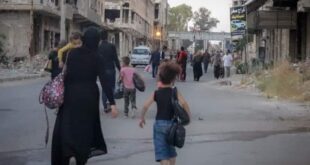Dayro d-Mor Gabriel (The Monastery of St. Gabriel), founded in 397, is the oldest surviving Syriac Orthodox monastery in the world. It is located on the Tur Abdin plateau near Midyat in the Mardin Province in Southeastern Turkey, the motherland of the Syriac people. It is also the seat of the metropolitan bishop of Tur Abdin. Syriac Christians, who speak Aramaic, the language of our Lord Jesus Christ, view this Monastery as a “second Jerusalem,” which sits atop a hill overlooking now solidly Muslim lands. It has just three monks and 14 nuns. It also has 12,000 ancient corpses buried in a basement crypt.
The dispute over Mor Gabriel has been closely watched abroad. The EU and several embassies in Ankara sent observers to a court hearing in February 2009. Protection of minority rights is a condition for entry into the EU. On 9th. February 2011, the President of the German Bishops’ Conference, Bishop Zollitsch and the President of the Evangelical Church in Germany Nikolaus Schneider let known in a jointed press release, that they are “dismayed” by this decision.
But the roots of the conflict go back much further: during 1914 to 1920, close to three million Christians of Syriac, Armenian or Greek Orthodox denomination were murdered by the Young Turks regime. Many exiled. A new exodus began in the 1980s during a brutal conflict between Turkish soldiers and Kurdish guerrillas. Syriac Christians, viewed with suspicion by both sides, frequently got caught in the crossfire. Midyat, the town where the court is reviewing the land dispute, used to be almost entirely Christian but now has just 120 non-Muslim families out of a population of 60,000. In the most recent decades, some Syriac families returned, this trend was viewed by the Muslims with suspicion and dismay. For this reason, the Syriac Universal Alliance (SUA) asked Erdogan “to ensure through your public statements that the Aramaean people who wish to return to their ancestral lands have a guarantee that their property rights are protected by the Turkish government and all relevant government bodies.”
 |
|
Entrance to the Monastery Mor Gabriel
|
On the other hand, Aramaeans complain that they lack sufficient teachers for their children’s instruction in even basic Aramaic literacy. In addition, they are not recognized as a religious minority, unlike the Greek, Armenian and Jewish communities, despite their being mentioned as such in the Lausanne Treaty of 1923, the founding agreement of the Turkish Republic. Messo of the SUA underlines that if Aramaeans were recognized in accordance with the Lausanne Treaty, “their basic protection and development in Turkish society, including the Aramaic language, and religious, cultural and property rights” would be ensured. He also emphasises that the court cases against Mor Gabriel were a wake-up call for the community: “After the lawsuits, we realized that we are facing similar problems, similar land disputes, so we decided to co-operate to resolve our problems.” (cf.: Qantara)
If a religious community is neither allowed to live according to its ancient Rule , to own properties, or to utilise its own land, where is the promised religious freedom? Turkey seems still to be far away from being a modern democratic state with a civil society, and it will be a long way to go should it still intend to become a member of the EU.
The Hompage of Mor Gabriel:
http://www.morgabriel.org/ Source: Catholicism Pure & Simple Assyrian Democratic Organization ADO
Assyrian Democratic Organization ADO







